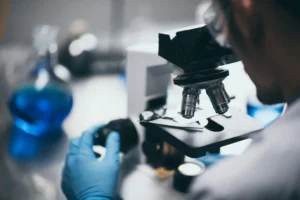Table of Contents
What is Hunterlab?
Hunterlab is a color measurement system that is used to determine the color of various objects. It is a widely used system in industries such as food, cosmetics, and textiles.
How does Hunterlab work?
Hunterlab works by measuring the reflectance or transmittance of light from an object. The system uses a spectrophotometer to measure the amount of light that is absorbed or reflected by the object. The data is then analyzed to determine the color of the object.
What are the benefits of using Hunterlab?
Using Hunterlab provides accurate and consistent color measurements, which is important in industries where color is a critical factor. It also allows for easy comparison of colors between different samples and can help identify any color variations or inconsistencies.
What are the different color scales used in Hunterlab?
Hunterlab uses three different color scales: L*, a*, and b*. L* represents lightness, with 0 being black and 100 being white. The a* scale represents the red-green axis, with positive values indicating red and negative values indicating green. The b* scale represents the yellow-blue axis, with positive values indicating yellow and negative values indicating blue.
How is color determined using Hunterlab?
To determine color using Hunterlab, a sample is placed in the spectrophotometer and the reflectance or transmittance of light is measured. The data is then analyzed using the L*, a*, and b* scales to determine the color of the sample.
What are some applications of Hunterlab?
Hunterlab is used in a variety of industries, including food and beverage, cosmetics, textiles, and plastics. It is used to ensure color consistency in products, identify any color variations or inconsistencies, and to develop new products with specific color requirements.
How can Hunterlab help improve product quality?
By providing accurate and consistent color measurements, Hunterlab can help improve product quality by ensuring that products meet specific color requirements. This can help reduce waste and improve customer satisfaction by ensuring that products are consistent in color and appearance.




